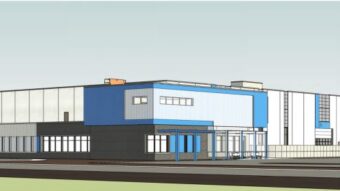It was a packed house last Tuesday for the State of Downtown Office, West Loop & Fulton Market Conference. The sold-out event, held at the beautiful 150 N. Riverside, dove into what’s driving office activity in Chicago’s three hottest submarkets.
The first panel, moderated by Scott Maesel, managing director, SVN Chicago Commercial, looked into the state of the market. The 200+ attendees were rapt by what the expert speakers had to say.
Drew Nieman, executive vice president, Riverside Investment and Development, pointed out that the suburban-to-urban migration, a positive business environment and strong economy have all led to a strong downtown office sector this cycle.
He also pointed out one trend of tenants reducing the amount of space they take, despite growing their employee roster. “Even law firms are shrinking space,” Nieman said. “That’s when you know it’s a trend, when law firms are getting more efficient.”
One issue that developers will have to wrangle with as tenants consolidate is that existing building infrastructure isn’t equipped for this new densification. More people in less space affects everything from elevators to air handling.
Another trend that hasn’t gone away is the intense amenity war. Owners and operators are looking for ways to include anything and everything that will attract new tenants or keep the ones they have in place. But as Scott Delano, AIA, LEED AP, design director at Wright Heerema Architects pointed out, it’s not about checking a box; some amenities simply don’t work in specific instances.
“You need to understand what’s around you because a building can’t do everything,” Delano said. “If your building provides things that are lacking in neighborhood, it will be successful.”
Whether it’s redeveloping older spaces or ground-up development, there’s one concern on everyone’s mind: construction cost.
“The last six corporate interiors we did in the past nine months averaged between $115 and $135 per square foot, and it keeps marching forward,” said John Russell, president, W.E. O’Neil Construction. “A lot of that is due to the fact that we have the third-highest field labor rate in Chicago. The average union worker cost, with benefits, is approaching $100 per hour.”
Russell suggested some strategies to combat the higher labor wages. These included more prefabrication as building in a controlled environment can help reduce costs. The savvy subcontractors, he pointed out, are investing in emerging technologies like 3D virtual design to further drive down costs.
While Nieman pointed out the incredible run that the Chicago office market has been on this cycle—and expressed his bullishness for the near future—Cushman & Wakefield executive director, Cody Hundertmark, was slightly less optimistic. While investors were excited and optimistic five years ago, he pegs the current Chicago investment climate as cautious and selective.
“The one thing that makes Chicago unique is bifurcation of investor demand. There’s a small section of market attracting liquidity, largely the riverfont assets and trophy buildings,” Hundertmark said. “The rest of the market—that’s what the investors are tepid on. Where people are willing to take those bets, there’s no question that there is strong tenant demand. But investors wonder if there’s enough to demand to raise all investments or if there will be winners and losers.”
The one submarket where all the panelists agreed that the future still looks bright is Fulton Market. “We have an authenticity that you can’t get in parts of the loop or the new megadevelopments,” said Paige Hennessy, director, Shapack Partners, who recently went into greater depth on the state of Fulton Market.
Andrea Upwood, director of real estate at Captivate, moderated the second panel discussion. Jillian Brown, director at Convene Chicago; Sean McCarthy, vice president business development and strategic initiatives at Comcast; Elan Peretz, managing director, general counsel at Barnett Capital Ltd.; Keely Polczynski, senior vice president at CBRE; Scott Seyer, AIA, LEED AP, principal at Goettsch Partners and Thomas Shanabruch, senior managing director, investments at McCaffery discussed design, construction, leasing, management and financing trends.
The panelists discussed a number of trends, including the top amenity that tenants want: high-speed, fiber connectivity. They also discussed where the coworking trend is headed (up and up, despite the recent bad headlines of one coworking provider). To hear all the expert commentary from future conferences, make sure to register for our upcoming events.



